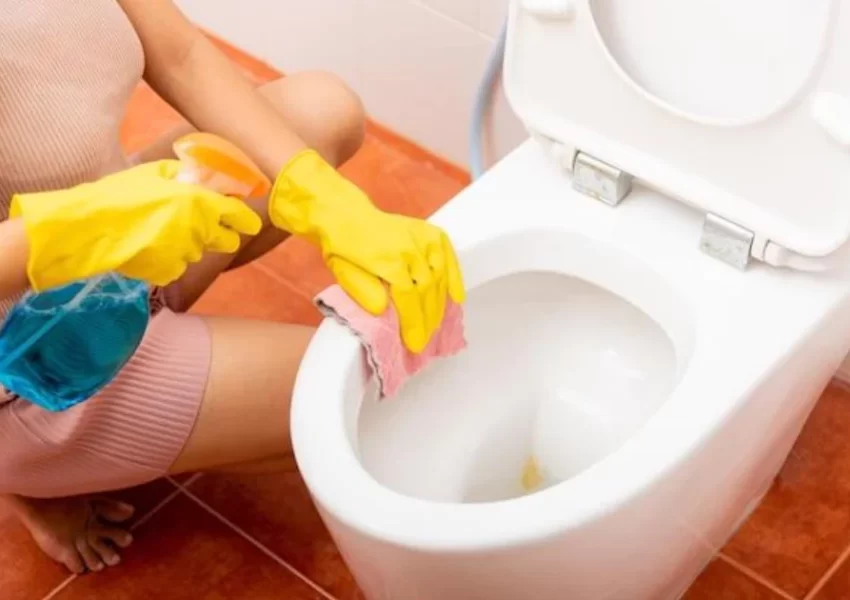Bathroom chores may not top anyone’s list of favorite tasks, but regular bathroom cleaning is necessary to keep your family healthy.
Effective bathroom cleaning requires knowledge from experienced cleaners – read on to discover all our tips!
De-clutter
An untidy bathroom can be more than just an eyesore: it could also contain germs. This is particularly true of items hidden under sinks or behind toilets; therefore it is crucial to declutter often and regularly.
As part of your first step to decluttering your bathroom, take an inventory of everything. Open each drawer and cabinet to see what items exist and how much of each you require storage for. Inspect lotions, shampoos, and soaps to get rid of anything that you haven’t used recently as well as makeup/nail polish/hair products past their expiration dates or that no longer serve a purpose in the space available to you.
De-cluttering Rx and OTC medications is essential, since they’re hard to keep track of. If they have expired or you no longer require them, consider giving them away, listing them for sale on free sharing apps such as Facebook Marketplace or Olio or discarding them altogether.
Disinfect
Bathroom surfaces can hide germs and mildew that are hard to get rid of, as well as being covered in grime. Utilizing different products on each surface is key, while having effective cleaning tools such as rags, sponges and scrub brushes at hand to avoid spreading bacteria between surfaces.
Finally, it is crucial to regularly disinfect high-touch areas such as toilet handles, shower curtain rods and toilet paper roll holders to protect yourself against germs. Cleaning products made from natural ingredients or registered with the EPA’s Safer Choice program tend to have less of an effect on both human health and environmental quality.
Cleaners containing natural ingredients provide powerful dirt-lifting, descaling, and deodorizing effects while remaining nontoxic, eco-friendly, and fume-free. Some are specially formulated for cutting through grease while others specialize in cleaning glazed ceramic tile and fiberglass surfaces. It only takes a few sprays with time for penetration before you’re ready to wipe most hard nonporous surfaces; heavy soap scum buildup may require two applications or extended contact times for thorough removal.
Wipe Down
Cleaning and disinfecting will be most necessary in these three areas of the bathroom, where most of the grime resides. This is where scrubbing and disinfecting come into play.
Before using cleaning products, wipe down all surfaces and crevices thoroughly. Be sure to have the appropriate product for each surface; for instance, bath tiles require their own product while glass, mirrors, sink and countertop cleaners have specific needs, according to Ashley Harkrader of Pretty Clean CLT.
Though multipurpose cleaners may seem tempting, it’s best to invest in specific sponges and rags for each surface in the room for best results. Otherwise, dust and germs could just keep spreading around!
Remember the small details like doorknobs, light switches and toothbrush holder when organizing a room. Empty and disinfect the trash can regularly; wash rugs and towels according to care tag instructions – these tasks help make rooms fresher while keeping hair and dirt off floors for easier mopping!
Mop
Mop can help clean out dirt and grime from hard-to-reach corners and crevices of your bathroom floor, including hard-to-reach corners and crevices. Make sure your room has proper ventilation with open windows and ceiling fan use; especially if using strong cleaners like bleach. Wear rubber cleaning gloves while mopping to prevent getting your hands wet and germy during cleaning sessions.
A sponge mop is a lightweight solution ideal for anyone who dislikes scrubbing or has difficulty managing traditional, heavy mops. They generally feature roller or butterfly wringing designs which require strength in order to drain all excess liquid out.
This bathroom mop boasts an adjustable head that can be attached or detached from its pole, enabling it to access even hard-to-reach spots on floors, walls, ceilings and glass surfaces – including behind toilets or in corners where regular mop heads cannot reach. Thanks to its angular head design, this mop makes short work of cleaning those hard-to-reach spaces.


